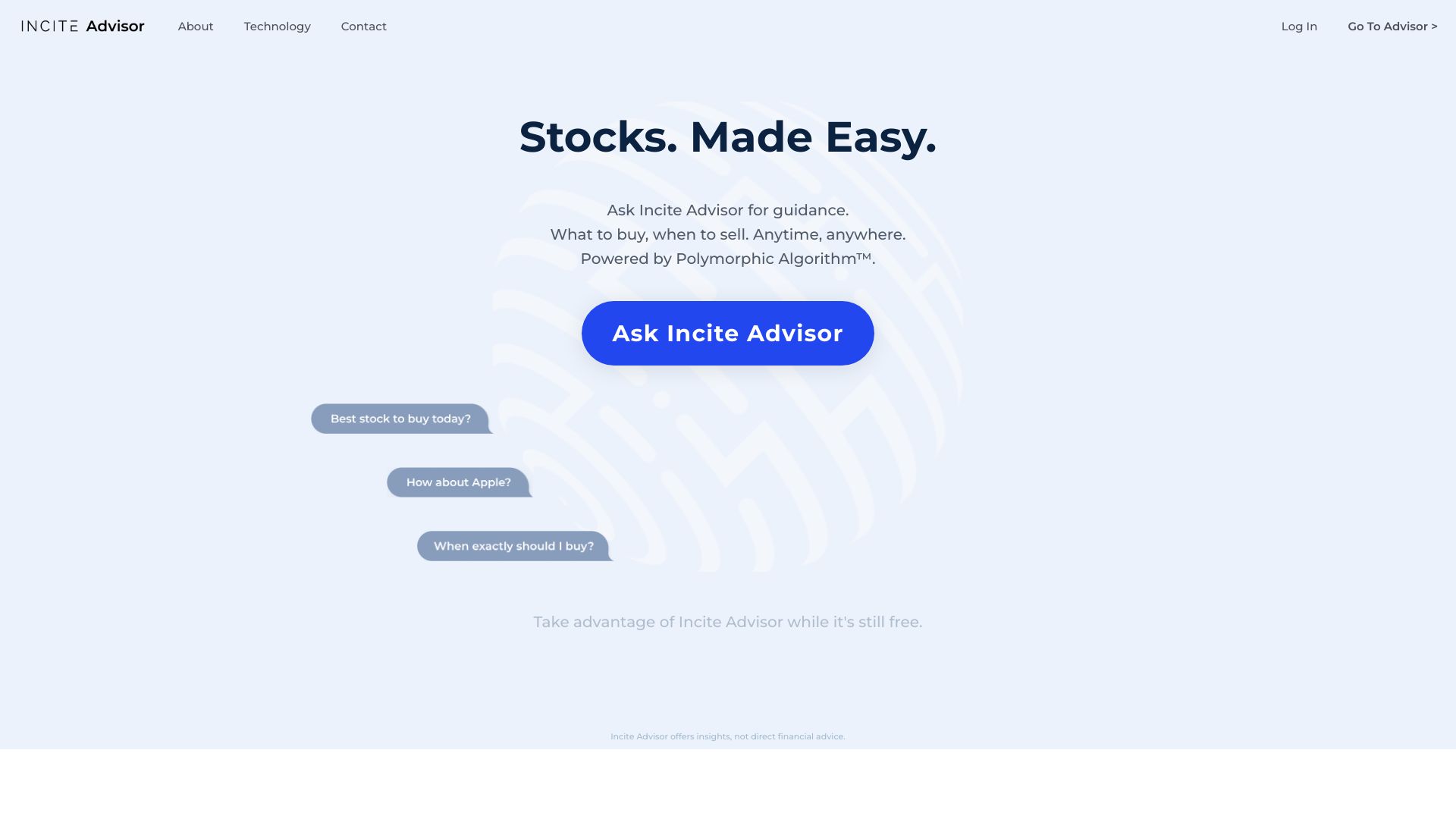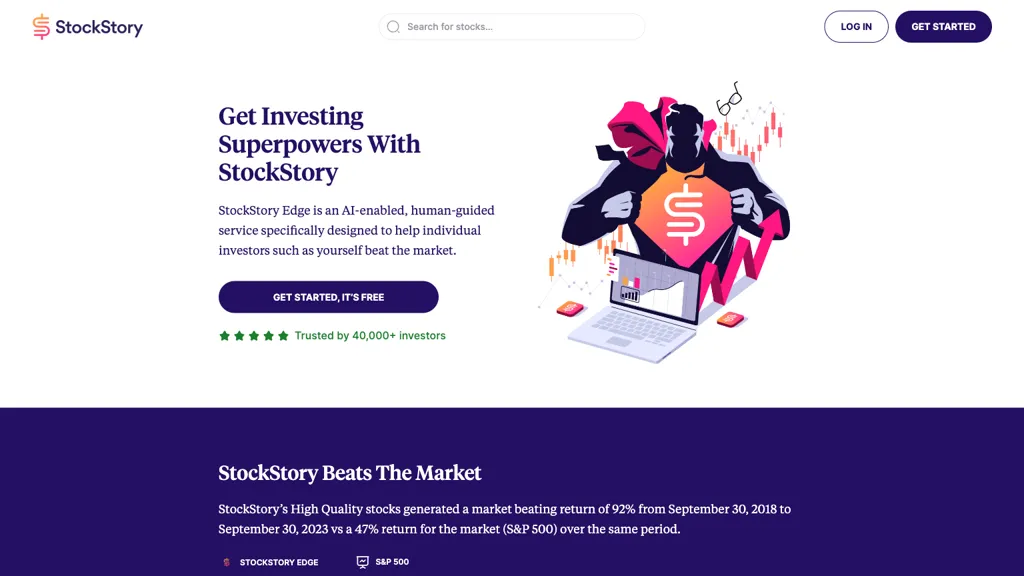20 Recommended Facts For Choosing AI Stock Picker Platform Websites
20 Recommended Facts For Choosing AI Stock Picker Platform Websites
Blog Article
Top 10 Tips On Assessing The Market Coverage For Ai Trading Platforms For Stock Prediction And Analysis.
Market coverage is among the most important factors to be considered when evaluating AI-based trading platforms. This determines how many market and asset types are accessible. A platform with extensive market coverage can allow you to diversify portfolios and explore opportunities for global trading and adapt to different strategies. Here are the top 10 tips for assessing the market coverage offered by these platforms:
1. Evaluate Supported Asset Classes
Stocks: Ensure that the platform includes stocks from all major stock exchanges, including NYSE, NASDAQ and LSE.
ETFs: Check if the platform supports a wide variety of ETFs that offer a wide exposure to sectors, regions, or even themes.
Futures and options. Make sure the platform can be used with derivatives like futures contracts, options and leveraged instruments.
Forex and commodities: Determine whether the platform can support the forex pair, precious metals, agricultural products, energy commodities, and other commodities.
Cryptocurrencies: Verify if the platform works with the major copyright, like Bitcoin and Ethereum, and alternative coins.
2. Check the Geographic Coverage
Global markets: Ensure that the platform is inclusive of major global markets such as North America, Europe and Asia-Pacific.
Regional focus: Find out if your platform has a specific focus on a region or market that aligns to your trading needs.
Local exchanges - Examine for local or regional exchanges which are relevant to your area and strategy.
3. Take a look at comparing real-time data delayed data delayed data
Real-time Market Data: The system must offer real-time data on trading that allows for quick decision-making.
Delayed Data: See whether the delayed data could be obtained for free or for an affordable cost. These may be sufficient for long term investors.
Data latency: Make sure the platform is able to reduce the delay of feeds that are real-time. This is especially important for high-frequency traders.
4. Evaluation of Historical Data
Historical data depth If the platform is available, ensure that it has extensive historical data (e.g. 10, 10+ years) for backtesting and analysis.
Review the accuracy of data from the past.
Corporate actions: Check if historical data accounts for dividends, stock splits, and other corporate actions.
5. Check market depth and order details
Platforms must provide Level 2 Data (order-book depth) to help improve price search and execution.
Verify the bid-ask ranges in order to make sure you are getting the most accurate price.
Volume data: Make sure that your platform has detailed volume data to analyze market activity and liquidity.
6. Review the coverage of Indices Sectors
Major indices: Make sure the platform is able to handle major indices (e.g., S&P 500, NASDAQ 100, FTSE 100) to benchmark and index-based strategies.
Sector-specific data : Determine if your platform contains data that is specifically for certain industries (e.g. technology, healthcare, energy) which allows you to conduct specific analyses.
Custom indices: Verify whether the platform supports the creation of or tracking of customized indices based on your preferences.
7. Evaluation of the integration with News and Sentiment data
News feeds - Make sure the platform has integrated real-time news feeds for news that are market-moving from reliable (e.g. Bloomberg or Reuters) sources.
Sentiment Analysis: Check whether the platform has sentiment analysis tools made from news, social media or other sources of data.
Event-driven strategy: Make sure that the platform supports event driven trading strategies (e.g. announcements of earnings economic reports).
8. Make sure you have Multi-Market Trading Capabilities
Cross-market trading : Ensure that your platform can handle trading on different asset classes, markets and exchanges through one interface.
Conversion to currency Check whether you are able to convert currencies in a way that is automatic for international transactions and also if you have multi-currency account options.
Support for time zones: Find out that your platform supports the ability to trade in multiple time zones.
9. Evaluation of alternative data sources
Alternative data: For unique insights, check that your platform utilizes alternative data (e.g. satellite imagery web traffic, satellite imagery, or credit card transactions).
ESG data: Check whether the platform contains environmental, social, and governance (ESG) data for socially responsible investment.
Macroeconomic data: Make sure the platform has macroeconomic indicators (e.g., GDP, inflation, interest rates) for analysis of fundamentals.
Review the User Feedback and Review the Market Reputation
User reviews: Read reviews from users to assess the coverage of the platform's market and reliability.
Reputation in the industry: Find out if the platform is recognized for its market coverage by industry experts or by awards.
Case studies and testimonials These will demonstrate the platform's performance in certain markets or classes of assets.
Bonus Tips
Free trial period: Check the coverage in the marketplace of the platform as well as its data quality with either a trial or demo.
API access: Check if your platform's API is able to access market data in a programmatic manner to run custom analyses.
Support for customers. Check that the platform provides assistance with regard to market or data questions.
These guidelines will assist you evaluate the market coverage provided by AI trading platforms which predict or analyze the prices of stocks. This way you'll be able select the one that provides you with the data and markets you require for successful trading. A comprehensive market coverage allows you to diversify and explore your portfolio. It also assists you adjust to changes in the market. View the best a knockout post on ai for stock trading for website examples including chatgpt copyright, ai stock trading app, ai for trading, ai investment app, trading with ai, investing ai, ai trading tools, ai for investment, market ai, ai stock trading bot free and more.
Top 10 Tips To Assess The Risk Management Of Ai Stock Predicting/Analyzing Trading Platforms
Risk management plays a vital function in any AI-powered platform for trading stocks. It helps protect your capital by limiting losses that could occur and helps you to maximize profits. A platform that has robust risk management tools will aid you navigate the market volatility and make well-informed choices. Here are ten strategies to help you evaluate the risk management capabilities of these platforms.
1. Review Stop-Loss Features, Take-Profit Features
Flexible levels: Ensure that the platform allows you to set stop-loss and take-profit levels for specific strategies or trades.
Find out if you can utilize trailing stops. They will automatically adjust if market conditions shift in your favor.
You must determine whether there are any stop-loss strategies that ensure that your position will be closed at the specified amount, even when markets fluctuate.
2. Tools to Measure Positions
Fixed amount: Ensure that the platform allows you to define the positions you want to take based upon a sum of money that is fixed.
Percentage of your portfolio: See if you can set size limits in percentages of your overall portfolio to reduce risk proportionally.
Risk-reward: Make sure your platform permits you to set risk-reward for each trade or strategy.
3. Look for Diversification Aid
Multi-asset Trading For diversification of your portfolio of investments, be sure that the platform you choose can handle trading in a variety of asset classes.
Sector allocation: Ensure that the platform has tools for monitoring exposure to different sectors.
Geographic diversification: Check if the trading platform has international markets available in order to spread risk geographically.
4. Examine Margin and Leverage Controls
Margin requirements: Make sure the platform discloses clearly any margin requirements for trading leveraged.
Check the platform to see whether it permits you to set limits on leverage to reduce risk.
Margin calls - Check to see if your platform informs you about margin calls in a timely manner. This will prevent liquidation.
5. Assessment of Risk Analytics and Reporting
Risk metrics: Be sure the platform has key risk metrics to your portfolio (e.g. Value at Risk (VaR) Sharpe ratio, and drawdown).
Assessment of scenarios: Determine if you can simulate different market scenarios on the platform to evaluate potential risks.
Performance reports: Make sure the platform provides you with detailed reports on performance, including returns that are risk adjusted.
6. Check for Real-Time Risk Monitoring
Portfolio monitoring: Ensure the platform offers real-time monitoring of the risk exposure to your portfolio.
Alerts and notifications. Check if the platform provides real-time notifications of risk-related events.
Review the dashboards for risk. If you're looking to get a full picture of your risks, make sure they're customizable.
7. Tests of Backtesting and Stress Evaluation
Stress testing: Check that the platform permits you to test your portfolios or strategies in extremely difficult market conditions.
Backtesting - See the platform you use allows you to backtest your strategies using previous data. This is an excellent method to gauge the risk and evaluate performance.
Monte Carlo: Verify the platform's use of Monte-Carlo-based simulations to evaluate the risk and modeling a range of possible outcomes.
8. Risk Management Regulations Compliance Assessment
Compliance with regulatory requirements: Ensure that your platform is in compliance with the relevant regulations for risk management in Europe and the U.S. (e.g. MiFID II).
Best execution: Verify that the platform is in line with the best execution practices. Trades will be executed at the most affordable price possible to minimize the chance of slippage.
Transparency Check the platform's transparency and clarity in risk disclosure.
9. Examine for Risk Parameters that are controlled by the User
Custom Risk Rules: Make sure you can define custom rules for risk management (e.g. an amount that is the maximum daily loss, a certain amount of tradeable position).
Automated Risk Controls Find out whether the platform has the capability to automatically enforce the risk management policy in accordance with predetermined parameters.
Manual overrides: Check if the platform allows manual overrides of automated risk controls in case of emergency.
Study Case Studies and User Feedback
User reviews: Conduct user research to determine the platform's efficiency in risk management.
Case studies Look up case studies, or testimonials, that prove the platform's ability to manage the risk.
Community forums: Find out if there's an active group of traders who share their tips and strategies for managing risk.
Bonus Tips
Trial period for free: Test the risk management features of the platform in real-world scenarios.
Support for customers: Ensure that your platform has a robust support for any queries or concerns related to managing risk.
Check for educational sources.
With these suggestions, you can determine the capabilities of AI platforms for stock prediction and analysis to control risks. This will help you choose a platform that safeguards your capital, and minimizes any losses that could occur. To manage volatile markets and achieve long-term success in trading you require a reliable software for managing risk. See the top check this out for trading ai tool for website info including ai stock trader, ai investment tools, best ai penny stocks, best ai stocks to buy now, can ai predict stock market, how to use ai for stock trading, ai options trading, ai options trading, ai options, ai stock investing and more.